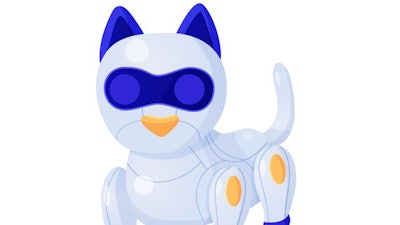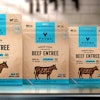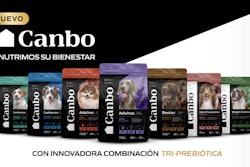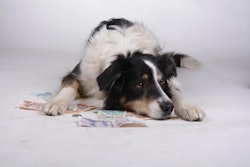
Since the dawn of the industrial age, from steel-driving John Henry to Matrix-busting Neo, writers have crafted stories about heroes who rage against the machines designed to replace us. Artificial intelligence may be the next device to threaten our livelihoods, or it could be the next tool to simplify our lives.
As a writer, I wondered if artificial intelligence could steal my job. Sticking with the Matrix metaphor, that makes OpenAI’s ChatGPT the Agent Smith to my Mr. Anderson. To test ChatGPT’s capacity for muscling in on my turf, I asked the program to write about pet food trends in 2023.
Here’s ChatGPT’s take on trends driving the industry this year.
The pet food industry is constantly evolving and changing, but there are some key trends that are expected to shape the industry in 2023:
Focus on Natural and Sustainable Ingredients: Consumers are becoming more conscious about the ingredients in their pet's food and are seeking out products made from all-natural, sustainable, and locally sourced ingredients.
Personalization and Customization: As pet owners look to provide their pets with the best possible diet, there is a growing demand for customized and personalized pet food options.
Increased Demand for Premium Products: With more consumers willing to pay a premium for high-quality pet food, there is a growing demand for premium and super-premium products.
Growth of Direct-to-Consumer Sales: Direct-to-consumer sales are growing in the pet food industry, as consumers seek out the convenience and transparency of buying products directly from the manufacturer.
Emphasis on Health and Wellness: Pet owners are becoming more aware of the impact of pet food on their pet's health and are seeking out products that promote wellness, such as those containing probiotics, prebiotics, and other functional ingredients.
Alternative Protein Sources: As consumers become more conscious of the environmental impact of traditional protein sources, there is a growing interest in alternative protein sources, such as insects, algae, and plant-based proteins.
Overall, the pet food industry is expected to continue to grow as pet owners seek out the best possible options for their furry friends.
ChatGPT must get our free, daily newsletters since every trend it identified had already received coverage on Petfood Industry’s website. However, the program did a good job of synthesizing the reporting done by my colleagues and me. This points out the weakness of AI programs that rely on existing articles published online. ChatGPT needs humans to write about something first before it can glean that information from the web.
Nevertheless, this experiment with ChatGPT did reiterate the lesson John Henry fatally learned. Machines can do tasks much faster than people. It took ChatGPT less than a minute to write about those six trends. But there’s a big difference between hammering railroad spikes and writing. Petfood Industry’s readers need analysis, insight and informed opinion, something an AI program can’t supply, but our two editors, one reporter and various freelancers can.
ChatGPT fails Reporting 101
Journalists aren’t seriously threatened by AI content creation...at least not yet. AI might even help. ChatGPT seems capable of cranking out content based on rapid online research. As a tool, AI programs could make writers' jobs easier by churning out background information.
However, ChatGPT failed at reporting. ChatGPT wrote this lede about the recent sale of several pet food brands by J.M. Smucker to Post Holdings, Inc.
“In February 2021, J.M. Smucker announced that it was selling a portion of its pet food brands, including Meow Mix, Milk-Bone, and Kibbles 'n Bits, to Post Consumer Brands.”
Wrong year – If ChatGPT were one of my students when I taught at the University of Missouri’s journalism school, that would have cost it a full letter grade on the assignment.
Wrong brands – Meow Mix and Milk-Bone were not part of the sale. Smucker held onto those two. By misreporting that, the AI missed an important strategic point from Smucker’s press release. AI would get an automatic F for that. On the contrary, Petfood Industry's editor-in-chief, Debbie Phillips-Donaldson blogged about the importance and meaning of Smucker's retention of those two brands.
Incorrect official name of the purchaser – I’ll let that one slide, since Smucker’s brands will likely fit into that division of Post Holdings, Inc. A reader wouldn’t have been misinformed or misled.
ChatGPT wouldn’t pass a basic news writing course, so I’m not worried yet. While artificial intelligence could threaten some jobs, it has a long way to go before it can compete with a trained journalist or creative copywriter.
While journalism isn’t AI’s forte, the software could serve advertising agencies or boost the promotional abilities of pet food companies with small marketing budgets. AI can generate advertising copy quickly. Smaller pet food companies could find this useful when promoting their products. Brands that can’t afford a marketing agency could let an AI program create basic content that a person could then target to that specific brand. As with journalism, the AI could serve as a tool to generate content, but a person will still need to polish and fact-check the machine’s output.
After this experiment with ChatGPT, I can quote cinema’s most famous machine-fighting heroine.
“The unknown future rolls toward us. I face it, for the first time, with a sense of hope.” – Sarah Connor, Terminator 2: Judgement Day


















